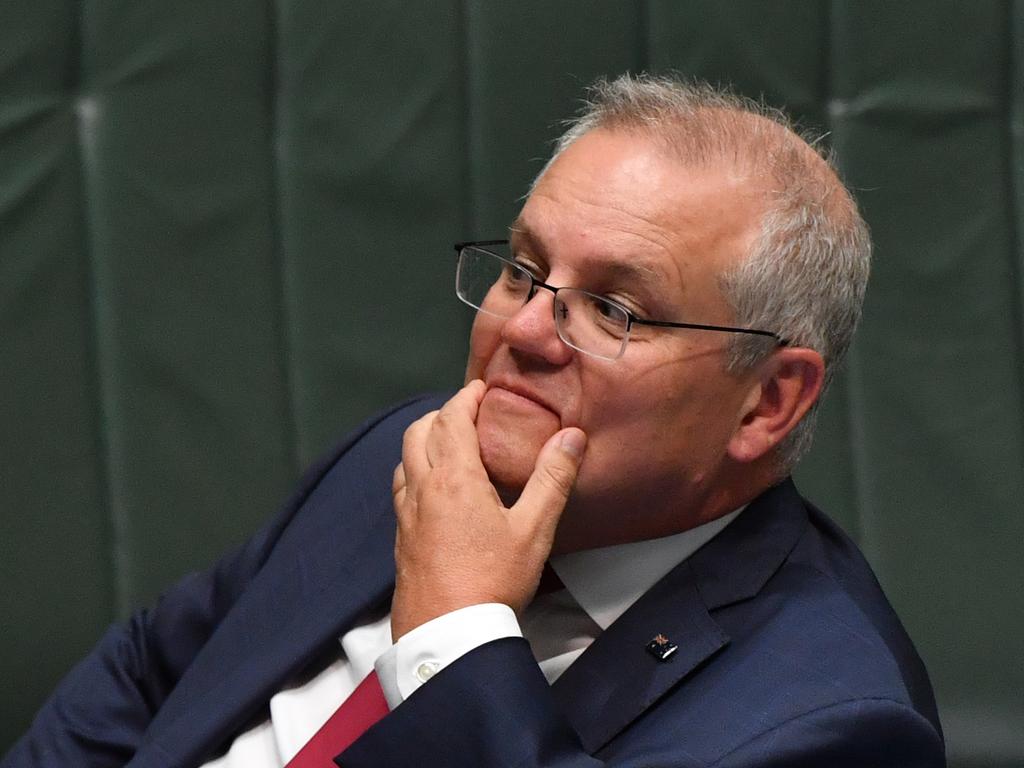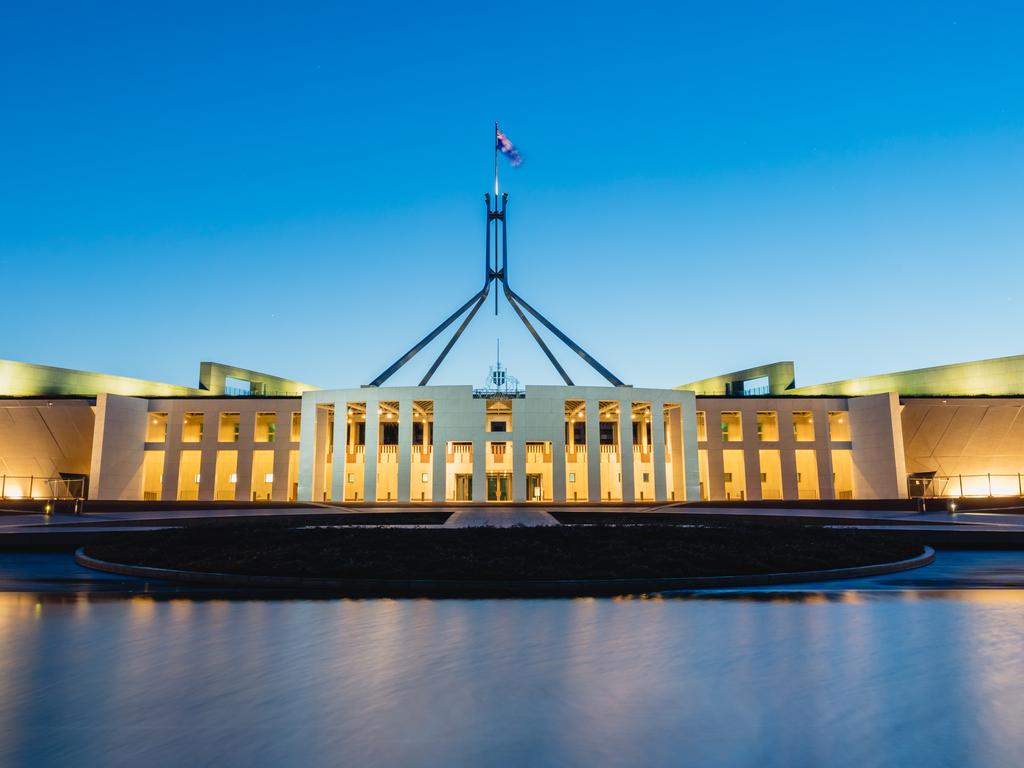Quotas for women in the Liberal Party are long overdue
The six-letter world Liberals have near universally rejected as a solution to their ‘women’s problem’ is now long overdue.

Then suddenly on Tuesday everything changed, or at least I hope it did. A Prime Minister under siege remembered that he’d ruminated about quotas as an out-of-the-box solution to the low numbers of women in parliament for the conservatives before the 2019 election.
However, at the time, Scott Morrison had no authority to impose such a “radical” shift on the Liberal Party, even if it was more than a thought bubble. He was the fill-in Prime Minister, remember? Not expected to win the election.
But then he did. Victory saw the issue of quotas pushed right down his priority list, if it was ever really on it, as so often happens to issues affecting women, even though they represent more than half the population. On Tuesday Morrison was on the back foot, needing to brandish something, anything, that showed he cared about what women wanted. Quotas suddenly was pushed right up the agenda. He supports them and claims he has for a long time now.
At the 2019 election, even without quotas, Morrison backed more women into winnable seats than any recent Liberal prime minister. Of the 16 new members of the Coalition — the class of 2019 — exactly half are women. The overall numbers within the parliamentary Coalition are still below 30 per cent, compared with Labor’s 50-50 fairness.
I have written about the need to impose quotas within the Liberal Party for years now. Every time I do it gets met with criticism among conservatives. Let’s see if the Prime Minister has the stomach for the fight internally.
More women within the Liberal Party are now coming out in support of the shift. Cabinet minister Karen Andrews joined that list this week.
It’s a nice contrast to Linda Reynolds who, when Morrison promoted her into cabinet in 2018, used her first media conference to exclaim proudly that her elevation was a clear sign women could make it in the party without quotas. It’s easy to say that quotas aren’t a good solution. That’s just rhetoric. It’s much harder to come up with alternative solutions that work to fix the gender imbalance.
The Liberal Party’s Senate ticket, which is more centrally controlled, has seen a greater number of women brought into the fold in recent years than has happened in the House of Representatives. A sign perhaps that party powerbrokers recognise how serious the issue is as an electoral impediment.
Liberals now have fewer female MPs than they did in 1996 when John Howard was elected prime minister. Reflect on that. A quarter of a century later they have gone backwards, despite the uptick at the last election.
The most vacuous argument against quotas is the notion that you support a quota to improve female representation or you support merit-based selections. What utter rubbish. Quotas ensure merit wins out, unless you honestly think women are inferior to men and are therefore worthy only of lower representation. It’s an illogical argument, yet the anti-quota brigade uses it time and time again.
Who seriously thinks the factional system or stacked preselections deliver merit anyway? Even if the argument is that not enough women are active in Liberal Party politics — hence a quota gives the few women who are an unfair advantage — then quotas should be seen through the prism of encouraging more women to engage and seek parliamentary office. It also should be viewed as a way of encouraging powerbrokers and factional leaders to seek talented women for representative roles in the first place.
That is what happened in Labor.
The other tired argument used to dismiss quotas is that they go against Liberal Party philosophy. As though many Liberals understand or have ever read political philosophy. Besides, the party’s coalition agreement with the Nationals includes a quota for the number of Nationals in cabinet. Fancy that.
We also have a constitutional quota for the number of senators hailing from each state within our institutional framework. And there are informal quotas for leaders when they select their ministerial line-ups, as they look to reflect state and factional affiliations. There is even an informal quota these days to boost the number of women Liberals put on the frontbench. So why not a quota to boost parliamentary numbers?
The barriers within the conservative side of politics to adopting quotas cut across age groupings. Older generations are naturally more conservative and hence more resistant. Young Liberal men, despite having more progressive tendencies than older party members, have ambition to become MPs. Introducing quotas would reduce their chances of relying on the patriarchal system to get them there, meaning they are resistant to change too.
Which is why Morrison’s intervention this week might be significant. That is, if he’s prepared to put his back into forcing real change.
Once upon a time women disproportionately used to vote Liberal over Labor. The male environment of the union movement was a turn-off for many women. But today the turn-off has flipped. The Liberal Party culture is now unfriendly to women, clearly, and Labor has a quota, which has bolstered not only female parliamentary representation but also the number of women who join the Labor Party in the first place.
And the women at the apex of the Labor Party are strong and central to party tactics, policy development and strategy. Where are the likes of Penny Wong, Kristina Keneally and Tanya Plibersek on the Coalition side?
Rattle off the names of senior women in the Liberal Party and it becomes clear there aren’t any. Julie Bishop was a lone wolf and she’s gone. Peta Credlin had power and authority but was cut down and never entered parliament anyway. Andrews is certainly formidable but on the outer. Look at Morrison’s inner circle and there isn’t a woman in sight. No wonder he misjudged the mood of women around the country in recent weeks.
Decades ago, when Labor introduced quotas, it was attacked without mercy by a Liberal Party that commanded the female vote. As that has steadily slipped away it has become obvious quotas have done their job for Labor. Yet the Coalition hasn’t even taken the first step to enforce change.
It’s time. Actually, it’s not time, it’s long overdue.
Peter van Onselen is a professor of politics and public policy at the University of Western Australia and Griffith University.







Quotas. It is a six-letter world Liberals have near universally rejected as a solution to their “women’s problem” for as long as I can remember.